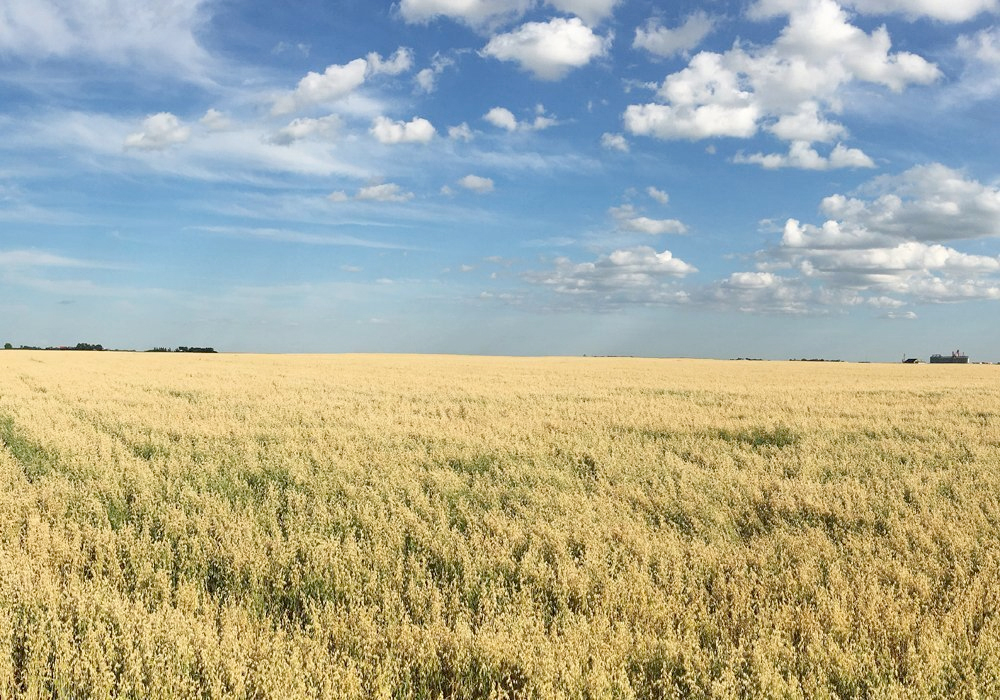New crop canola and oats look like winners while soybeans and barley appear to be dogs. At least, that’s the analysis from provincial agriculture departments in Manitoba and Saskatchewan.
Manitoba’s crop production cost guidelines have been published for several weeks while Saskatchewan’s Crop Planning Guide 2022 is more recent. Cross referencing the two is an interesting exercise.
In Manitoba, oats are second only to pinto beans for projected profitability. Average Manitoba oat yields are 110 bushels per acre with a new crop projected price of $5.75 a bu. providing strong returns over total costs.
Read Also

Trump’s trade policies take their toll on Canadian producers
U.S. trade policy as dictated by president Donald Trump is hurting Canadian farmers in a multitude of ways.
The Saskatchewan analysis uses a projected price of $6 a bu. Oats don’t pencil out very well in the brown and dark brown soil zones of the province, but in the black soil zone, where most of the oats are grown, the profitability matches the strong Manitoba numbers.
On canola, Manitoba assumes a new crop price of $16.50 a bu., while Saskatchewan uses $17 and that makes canola one of the top money makers. Profitability is lower in the brown soil zone of Saskatchewan where average canola yields are lower, but even in that traditionally drier region, there’s a strong return over total expenses.
Manitoba doesn’t include an analysis for lentils because the province grows very few. Saskatchewan numbers show red lentils as even more profitable than canola when using a 35-cent-per-pound price assumption. Red lentils are dramatically more profitable than large green lentils in the analysis. The same 35-cent price assumption is used for large greens, but average yields are significantly lower while variable costs are higher.
While pinto beans, white beans and corn are profitable crops in some regions of Manitoba, Saskatchewan has lentils, durum wheat and mustard.
Barley is one of the crops on the other end of the scale. Manitoba assumes a new crop barley price of $6.50 a bu., while Saskatchewan is using $5.50 on feed barley and $6.11 on malting. The yield assumption is lower on malting barley while variable costs are higher. In all scenarios, average barley yields do not cover total expenses.
Soybeans also show a surprising lack of profitability in both provinces. Manitoba uses a new crop price of $13.50 a bushel, just slightly above the $13.38 used in the Saskatchewan analysis. Assuming average yields, soybeans in Manitoba barely cover expenses while in Saskatchewan the numbers look even worse.
In Manitoba, peas also trail the pack with a profitability only slightly better than barley and soybeans. Saskatchewan shows peas as reasonably profitable with some of the difference attributable to different price assumptions. Manitoba uses a new crop price of $11 a bu. on peas, while Saskatchewan is using $12 a bu. for yellow peas.
The provinces also differ on their outlook for flaxseed. Saskatchewan assumes a new crop flax price of $20.50 a bu., while Manitoba is using $22.50. It could be argued that both are on the low side because new crop flax contracts have been available in the $24 range. Surprisingly, even with the lower price assumption, flax in Saskatchewan is much more profitable than Manitoba given average yields and the expense assumptions.
While it’s important for producers to do their own analysis, the work by the agriculture departments in the two provinces leads to some broad conclusions.
Watch for canola and oat acreage to increase. Soybean and barley acreage will likely decline. Peas and flax will remain much more important in Saskatchewan than Manitoba.
Kevin Hursh is an agricultural journalist, consultant and farmer. He can be reached by e-mail at kevin@hursh.ca.
















